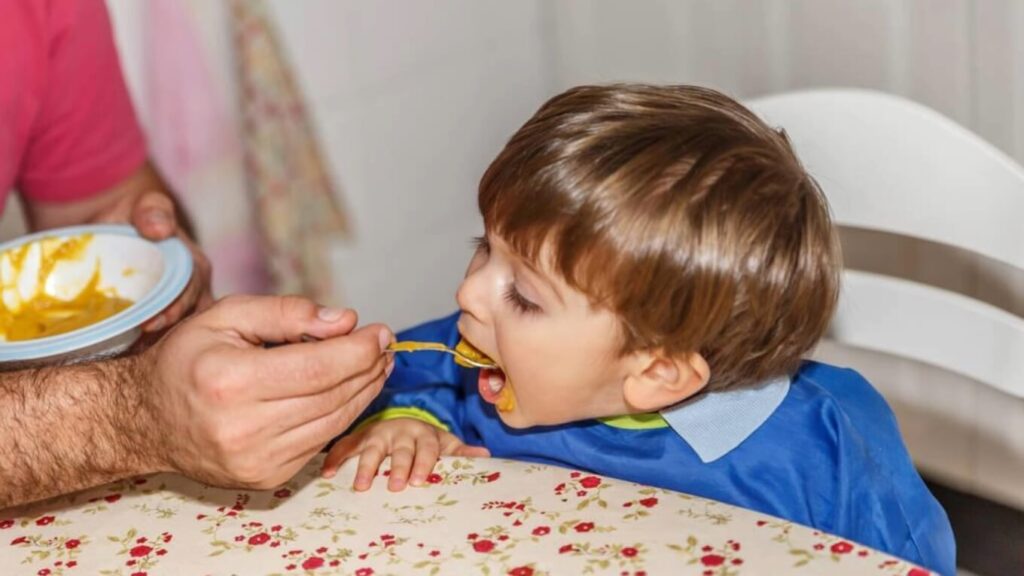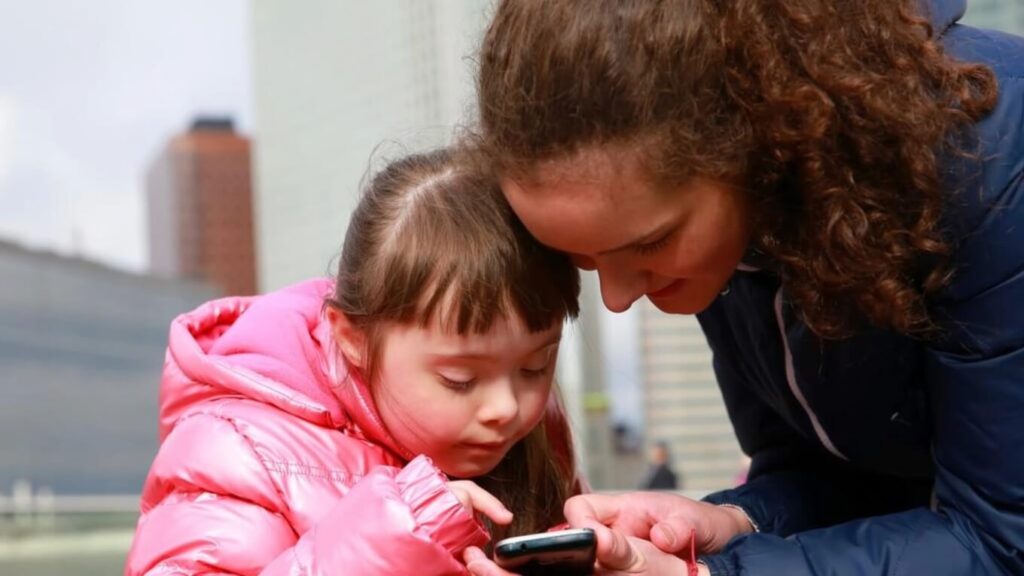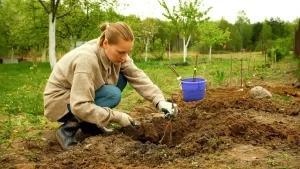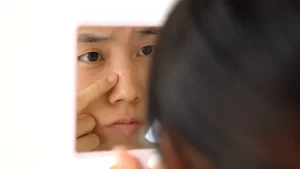Spreading food here and there, playing with water, being glued to the mobile all day long are habits found in every child. Have you taken any steps to get rid of them?

Often you have to deal with your child’s tantrums. Whenever the child sits down to eat or you try to feed him, you have to make a lot of effort. This habit of jumping and hopping continues even while eating, due to which food keeps falling here and there.

Some children start playing with the food while scattering it here and there. The child’s demand for mobile while eating, running here and there and spreading food often becomes the reason for your irritation, but this irritation of yours can have a bad effect on his child’s mind.
In such a situation, keep yourself gentle and improve his habits.
His Actions, Your Instructions:
When the child is about two years old, it is the right time to teach him proper and civilized eating habits. You should teach him to respect food. His habits should be improved by telling him how to eat and that spilling food is not a good thing.
Do not force your child to eat what he does not like. If the taste of nutritious food is not to his liking, you can change the taste. Sometimes the child refuses to eat because his stomach is full. If this is the case, do not force him to eat at all. If possible, avoid serving more food on his plate.
Teaching proper eating habits to a child is essential for their overall development. Here are some detailed instructions based on the passage you provided:
Timing Matters:
- Around the age of two, children are more receptive to learning and imitating behavior. This is an ideal time to start teaching them about eating habits.
- Consistency is key. Set a routine for meals and snacks to help the child understand when it’s time to eat.
Respect for Food:
- Teach your child to respect food. Explain that food is essential for growth, energy, and health.
- Encourage positive associations with mealtime. Make it a pleasant experience by sitting together as a family and engaging in conversation.
Proper Eating Habits:
Show your child how to eat properly:
- Use utensils (fork, spoon, etc.) appropriately.
- Chew food thoroughly.
- Avoid talking with a mouthful.
Explain that spilling food is not desirable, but accidents happen. Be patient and guide them gently.
Food Preferences:

- Children have individual tastes. Respect their preferences.
- If your child dislikes a particular nutritious food, try different preparations or flavors. For example, if they don’t like broccoli, try roasting it with olive oil and garlic.
- Avoid forcing them to eat something they genuinely dislike.
Listen to Hunger Cues:

- Sometimes a child refuses to eat because they’re not hungry. Trust their cues.
- If their stomach is full, don’t insist on more food. Overeating can lead to discomfort and unhealthy habits.
Portion Control:
- Serve appropriate portions. Avoid overwhelming the child with too much food.
- If they finish their plate and want more, offer a small second helping rather than piling their plate initially.
Remember, patience and positive reinforcement go a long way in shaping a child’s eating habits. 🌟
Feel free to ask if you have any more questions or need further advice! 😊
Arbitrary Behavior With Water:
Most children like to play with water. They waste a lot of water while playing with it in the bathroom, kitchen or any place with a tap. In such a situation, you can stop the child from doing so by telling him the importance of water. Often children try to do the same by looking at others, so you should also try to save water.
Explain to him the right ways of using water by giving examples, like he should fill a bucket or tub before bathing. Keep the tap closed while bathing. On coming home, pour the remaining water in the school water bottle in a pot or at the root of a tree. Keep the tap closed while brushing.

Teaching children about water conservation is crucial for their understanding of environmental responsibility. Here are the detailed instructions:
Importance of Water:
- Explain to the child why water is essential. Discuss its role in our daily lives, from drinking and cooking to sanitation and agriculture.
- Emphasize that water is a precious resource, and wasting it can harm the environment and future generations.
Setting an Example:
- Children often imitate adults. Be a role model by conserving water yourself.
- Show them practical ways to save water, such as turning off the tap while brushing your teeth or using a bucket to collect water for cleaning.
Proper Water Usage:
Teach the child how to use water efficiently:

- Bathing: Fill a bucket or tub with the required amount of water before bathing. Avoid leaving the tap running continuously.
- Brushing Teeth: Keep the tap closed while brushing to prevent unnecessary water flow.
- After School: When the child returns home from school, pour any remaining water from their water bottle into a pot or near the base of a tree. This way, no water goes to waste.
Conservation Tips:
Encourage the child to:
- Turn off the tap tightly after use.
- Report any leaks or dripping faucets promptly.
- Use a glass or cup for drinking water instead of running the tap.
- Be mindful of water usage during playtime.
Outdoor Water Use:
- If you have a garden, involve the child in watering plants. Explain that plants need water to grow and thrive.
- Teach them not to waste water while playing with hoses or sprinklers.
Remember to keep the explanations simple and age-appropriate. By instilling good water habits early on, we contribute to a more sustainable future. 🌍💧
Feel free to ask if you have any more questions or need further advice! 😊
Piggy Bank for a Bright Future

In this era of rising inflation, you must explain the importance of money to your child. You should also tell him the difference between wasteful expenditure and saving. To inculcate the habit of saving in the child from childhood, you can give him a piggy bank.
If you want, you can buy a piggy bank that looks like his favourite cartoon character and gift it to him. You can encourage him to put some part of the money he gets from guests, relatives, grandparents or from you in the piggy bank.
In this way, the habit of saving will gradually develop in him. If you want, you can also get a bank account opened in the name of the child and get his money deposited in it.
Teaching children about money management and the importance of saving is a valuable life lesson. Let’s explore the concept of using a piggy bank to instill good financial habits in children.
Importance of Money:
- Explain to your child that money is a valuable resource. It allows us to buy things we need and want.
- Discuss how people earn money through work or other means, emphasizing its significance in daily life.
Wasteful Expenditure vs. Saving:
Teach your child the difference between wasteful spending and saving:

- Wasteful Expenditure: Buying unnecessary items or spending money impulsively.
- Saving: Setting aside money for future needs or goals.
Introduce the Piggy Bank:

A piggy bank is a great tool to teach saving habits:
- Choose a piggy bank that appeals to your child, such as one featuring their favorite cartoon character.
- Explain that the piggy bank is like a treasure chest where they can keep their money safe.
Encourage Saving:
- Whenever your child receives money (from guests, relatives, or allowances), encourage them to put a portion of it into the piggy bank.
- Discuss the concept of saving for something special, like a toy or a fun outing.
Visualize Savings:
Periodically open the piggy bank together:
- Count the money saved.
- Talk about what they might want to use it for.
This helps reinforce the habit of saving.
Bank Account Option:
If you’re comfortable, consider opening a bank account in your child’s name:
- Visit a local bank and inquire about children’s savings accounts.
- Explain how the bank keeps their money safe and even pays a little interest.
- Take your child along to make the experience more engaging.
Deposit Money:
- When your child accumulates a significant amount in the piggy bank, consider depositing it into their bank account.
- Show them how the money grows over time with interest.
Remember, the goal isn’t just to accumulate money but to develop a healthy attitude toward saving and spending. By using a piggy bank and eventually transitioning to a bank account, you’re setting your child on the path to financial responsibility and a bright financial future! 🌟💰
Feel free to ask if you have any more questions or need further advice! 😊
Mobile Addiction
Some parents give mobile phones to their children at an early age to keep them busy or to satisfy their stubbornness. When the child gets used to it, they start showing strictness, but by then it is too late and the child starts using the mobile secretly.
Therefore, it is important that you direct your child’s mind towards outdoor games. You can also play some indoor games with him. Do not give him the mobile at all and also turn off the internet connection of your mobile after work.

Mobile addiction is a growing concern, especially among children. Addressing mobile addiction in children is crucial for their overall well-being. Let’s explore this topic in depth and discuss practical ways to manage it.
Understanding Mobile Addiction:
- Acknowledge that mobile phones can be addictive, especially for children.
- Some parents unintentionally introduce mobiles early to keep their child occupied or due to their own convenience.
Early Intervention:
It’s essential to address this issue early:
- Avoid Early Exposure: Delay introducing mobile phones to your child as long as possible.
- Alternative Activities: Instead of relying on screens, engage your child in other activities.
Outdoor Games:
Encourage outdoor play:
- Benefits: Outdoor activities promote physical health, social interaction, and creativity.
- Examples: Play catch, hide-and-seek, or explore nature together.
Indoor Games:
Indoor games are equally important:
- Board Games: Play board games, puzzles, or card games.
- Creative Play: Encourage drawing, building with blocks, or storytelling.
Limit Mobile Usage:
- No Mobiles: Avoid giving mobile phones to young children altogether.
- Set Boundaries: If necessary, set specific times for mobile use (e.g., during travel or emergencies).
Turn Off Internet:
- After Work Hours: When you’re done using your mobile, turn off the internet connection.
- Model Behavior: Children learn by observing. Show them that you prioritize face-to-face interactions over screens.
Remember, moderation is key. While technology has its benefits, maintaining a healthy balance is crucial for a child’s physical, mental, and emotional development. Consistent guidance and positive reinforcement will help your child develop a healthy relationship with technology. 📱🌿
Feel free to ask if you have any more questions or need further advice! 😊

































I’ve learn several good stuff here. Certainly value bookmarking for revisiting. I wonder how so much attempt you place to make one of these wonderful informative site.
Useful info. Fortunate me I found your web site by chance, and I am shocked why this accident did not took place in advance! I bookmarked it.
I do agree with all of the ideas you’ve presented in your post. They’re very convincing and will certainly work. Still, the posts are too short for starters. Could you please extend them a little from next time? Thanks for the post.
Wonderful website. Lots of helpful info here. I am sending it to some friends ans also sharing in delicious. And obviously, thank you for your effort!
Cool blog! Is your theme custom made or did you download it from somewhere? A design like yours with a few simple adjustements would really make my blog shine. Please let me know where you got your theme. Cheers
Hi there just wanted to give you a quick heads up. The words in your post seem to be running off the screen in Firefox. I’m not sure if this is a formatting issue or something to do with browser compatibility but I figured I’d post to let you know. The style and design look great though! Hope you get the problem fixed soon. Thanks
Hey very cool site!! Man .. Beautiful .. Amazing .. I will bookmark your website and take the feeds also…I am happy to find so many useful information here in the post, we need work out more strategies in this regard, thanks for sharing. . . . . .
You are a very intelligent person!
This really answered my problem, thank you!
Hey! I realize thnis is kind of off-topic however I had too ask.
Does rujning a well-established blpog like yourds requre a
llot off work? I’m compltely neww tto operating a blolg butt I do wriote in mmy journal
on a daaily basis. I’d like tto start a blog soo I caan easily shsre myy experience and
thougbhts online. Please lett mme know iif yyou haave anny kind
off recommendations or tios foor brand new aspiring bloggers.
Appreciate it!
We’re a group of volunteers and starting a new scheme in our community. Your web site provided us with valuable information to work on. You have done a formidable job and our entire community will be grateful to you.
You made some respectable points there. I regarded on the web for the difficulty and found most people will go together with together with your website.
Appreciating the hard work you put into your blog and in depth information you offer. It’s great to come across a blog every once in a while that isn’t the same out of date rehashed material. Fantastic read! I’ve saved your site and I’m including your RSS feeds to my Google account.
I discovered your blog site on google and check a few of your early posts. Continue to keep up the very good operate. I just additional up your RSS feed to my MSN News Reader. Seeking forward to reading more from you later on!…
This is a topic close to my heart cheers, where are your contact details though?
I carry on listening to the news speak about getting free online grant applications so I have been looking around for the best site to get one. Could you advise me please, where could i find some?
I got what you mean ,saved to fav, very nice web site.
I have been exploring for a little for any high quality articles or weblog posts on this sort of space . Exploring in Yahoo I eventually stumbled upon this website. Reading this info So i am glad to show that I’ve a very good uncanny feeling I came upon just what I needed. I most certainly will make certain to don’t disregard this web site and provides it a glance on a constant basis.
Attractive section of content. I just stumbled upon your weblog and in accession capital to assert that I get in fact enjoyed account your blog posts. Any way I will be subscribing to your feeds and even I achievement you access consistently quickly.